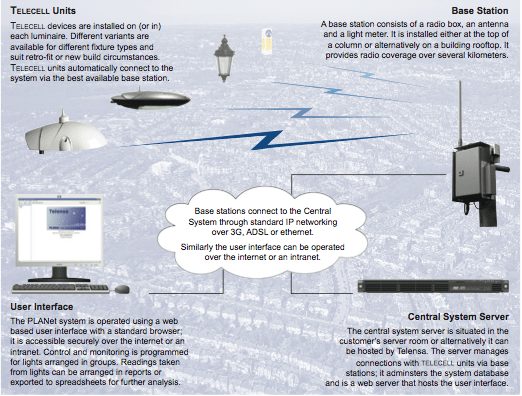Telensa, a Plextek company, focuses on “Internet of Things” connected via ultra narrowband technology. Eighteen years ago, this technology was developed to track stolen vehicles and used by companies such as LoJack in the United States and Tracker in the United Kingdom. UNB is a long-range, low-power wide area radio technology that operates globally in license-free and private bands. Telensa was founded in 2005 to support the market for IoT, although the industry didn’t use that terminology at that time.
IoT means many different things depending on who is participating in the discussion. For Telensa, IoT relates to smart cities, smart lighting, smart parking and the underlying network for IoT service providers.
Starting with smart cities; there are topics in addition to smart lighting and smart parking that can be addressed. Waste collection on-demand is one example of additional functionality. Today the waste collection trucks circle the city on identified days and routes regardless of the need for waste collection. Sensors are able to determine if the receptacles need to be addressed and, if so, route the trucks accordingly. School field trips are easily managed with smart wristbands enabling teachers to track their students while outside of the school grounds ensuring they are safe and located where they should be. These are only two of the additional examples that can be addressed, more can be seen in the video below.
Smart power and water can also play a role in the city of tomorrow by monitoring the usage levels of these resources, detecting leaks and potential problems to avoid outages before they occur and prioritize repairs when things do happen.
Smart lighting is another topic of interest in today’s smart city discussions. Streetlights consume up to 35% of most city energy budgets, but smart lighting can reduce those costs by up to 60%. Lights can be monitored for outages in order to reduce repair times and dimming can occur based on time of day requirements. Telensa currently manages almost 1 million streetlights with the largest deployment consisting of 130,000 lights on one of the company’s PLANet central management systems. 
Smart parking reduces the amount of waste caused by drivers looking for parking spaces. Wasted time circling the block, wasted fuel and emissions due to driving longer in search of a spot and increased congestion caused by those in search of parking. Ruggedized sensors with a 5-year battery life are installed in parking spots to allow for collection of parking space data to be centralized and communicated to potential parkers. This solution is live in Russia and coming online in China.
Telensa, today announced rollouts of its PARKet system with infrastructure partner Gorizont Telecom in Moscow to cover three major cities. Moscow and St. Petersburg are already deployed and projected to grow to 70,000 devices in the field. Each base station supports several thousand sensors, reducing the requirement for additional equipment in the field. A second project in China was also announced and is due to be live by second-quarter 2016. There are also pilots taking place in Brazil, Australia, New Zealand and Poland.
But there’s also competition to be considered. If you’re following this space, you’ve likely heard of SigFox and LoRaWAN solutions. Some of the key differences highlighted by Telensa for consideration when selecting the solution best for your scenario are the following:
- Bi-directional bandwidth needs impacts the way a sensor is utilized – short constant acknowledgements vs. a latent solution that wakes up to communicate when needed/scheduled.
- Does the “thing” move – this requires bidirectional support.
- Cost of deployment among different technologies and the required level of space for base station equipment.
- How to balance power requirements across a network.
- Impact of these items to battery life and the type of sensor needed to deploy related to battery size and requirement for battery replacement timelines.
Not all systems are created equal. More options continue to come to market with different considerations for cost, longevity and sensor size. All things must be considered when determining the best-fit IoT provider for your underlying network of things.
Like what you read? Follow me on twitter!
Claudia Bacco, Managing Director – EMEA for RCR Wireless News, has spent her entire career in telecom, IT and security. Having experience as an operator, software and hardware vendor and as a well-known industry analyst, she has many opinions on the market. She’ll be sharing those opinions along with ongoing trend analysis for RCR Wireless News.

